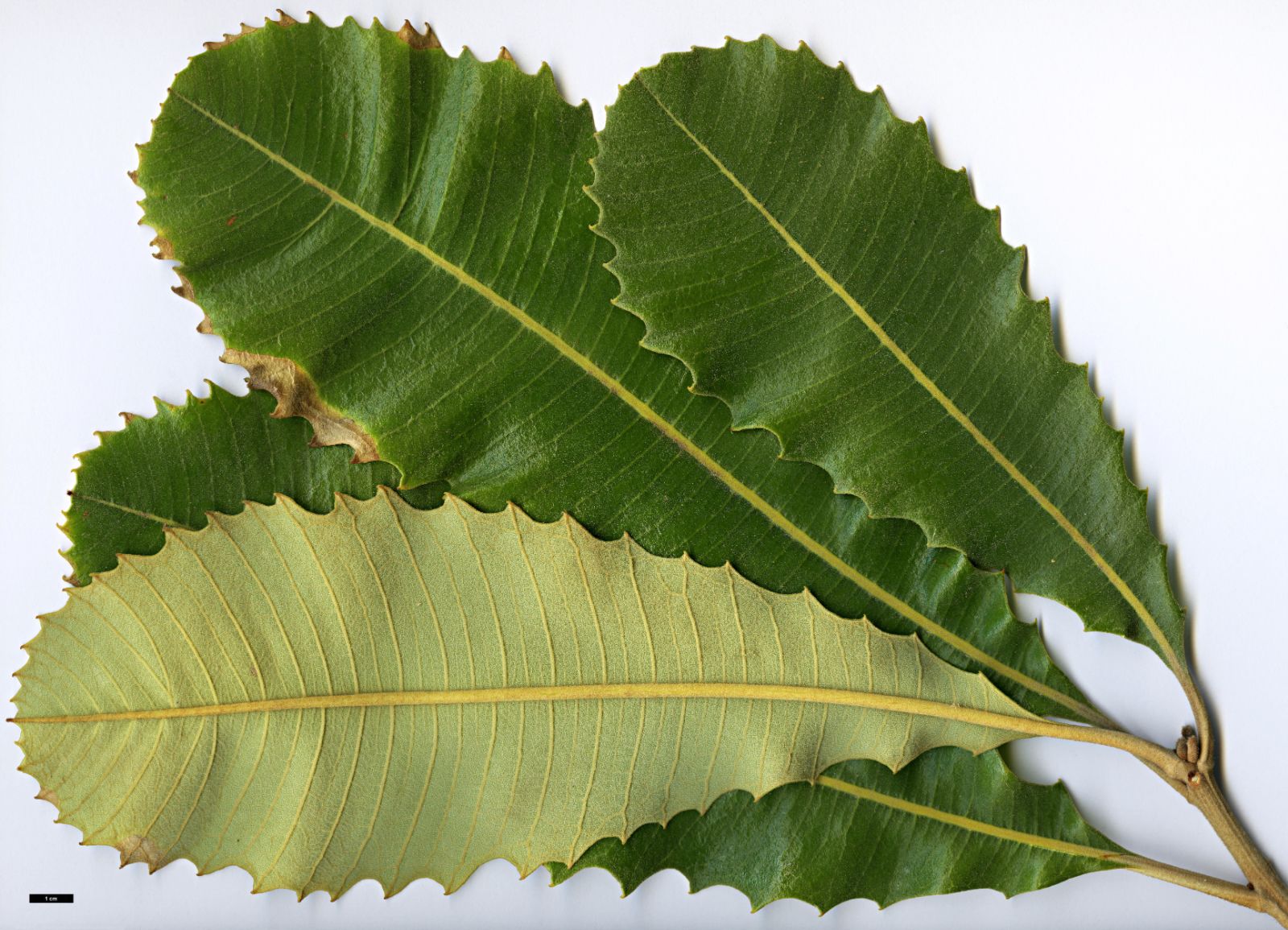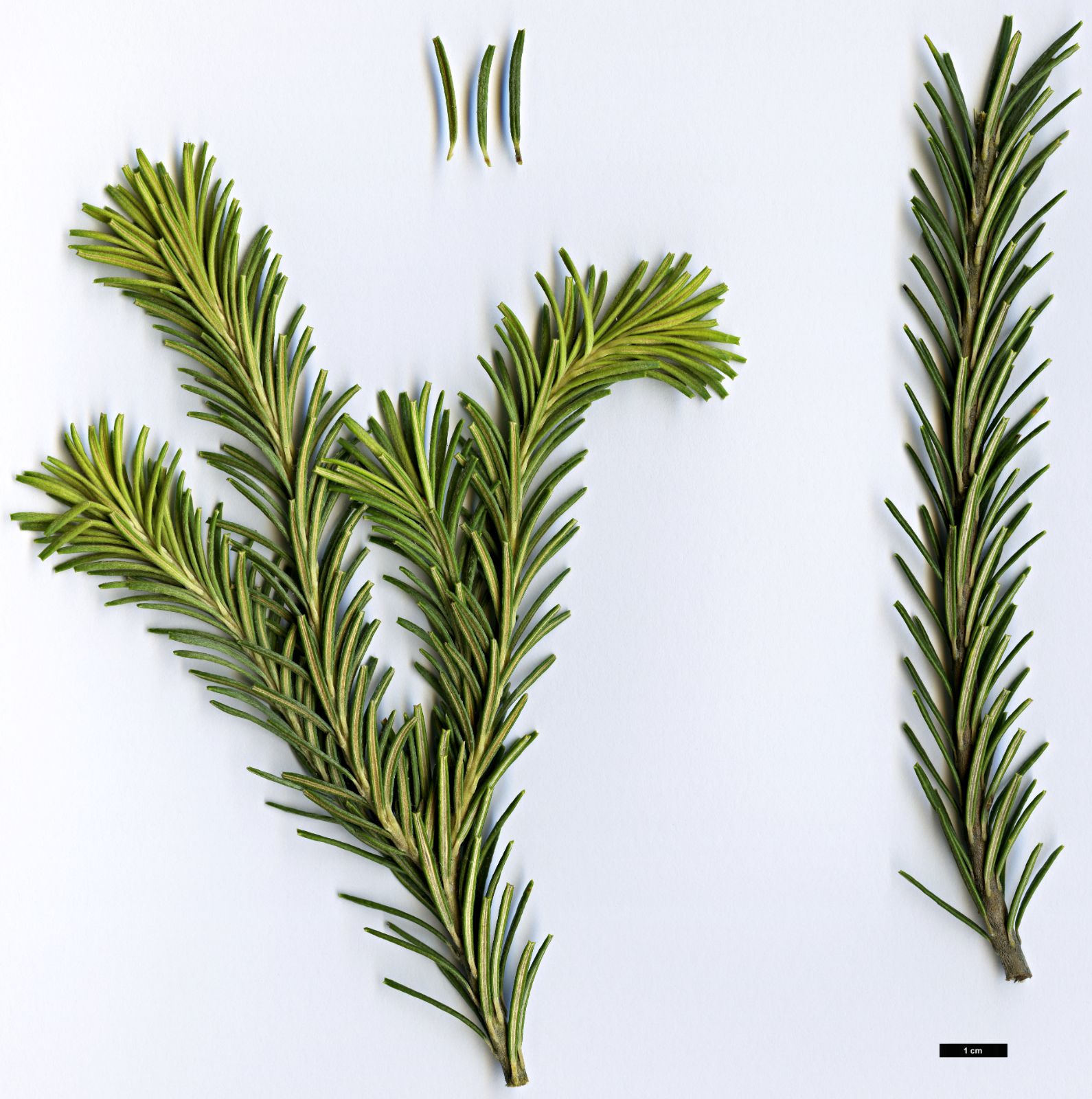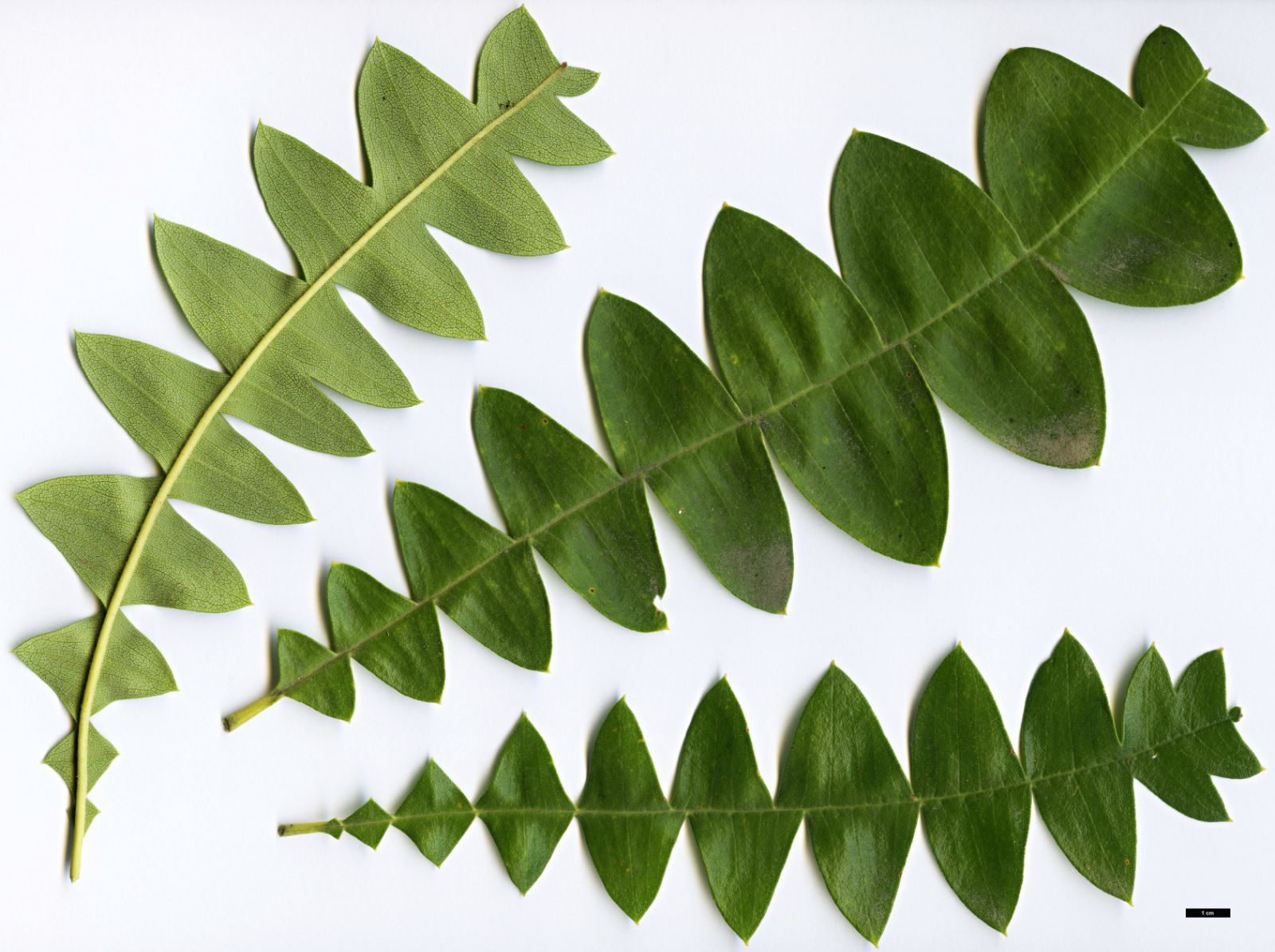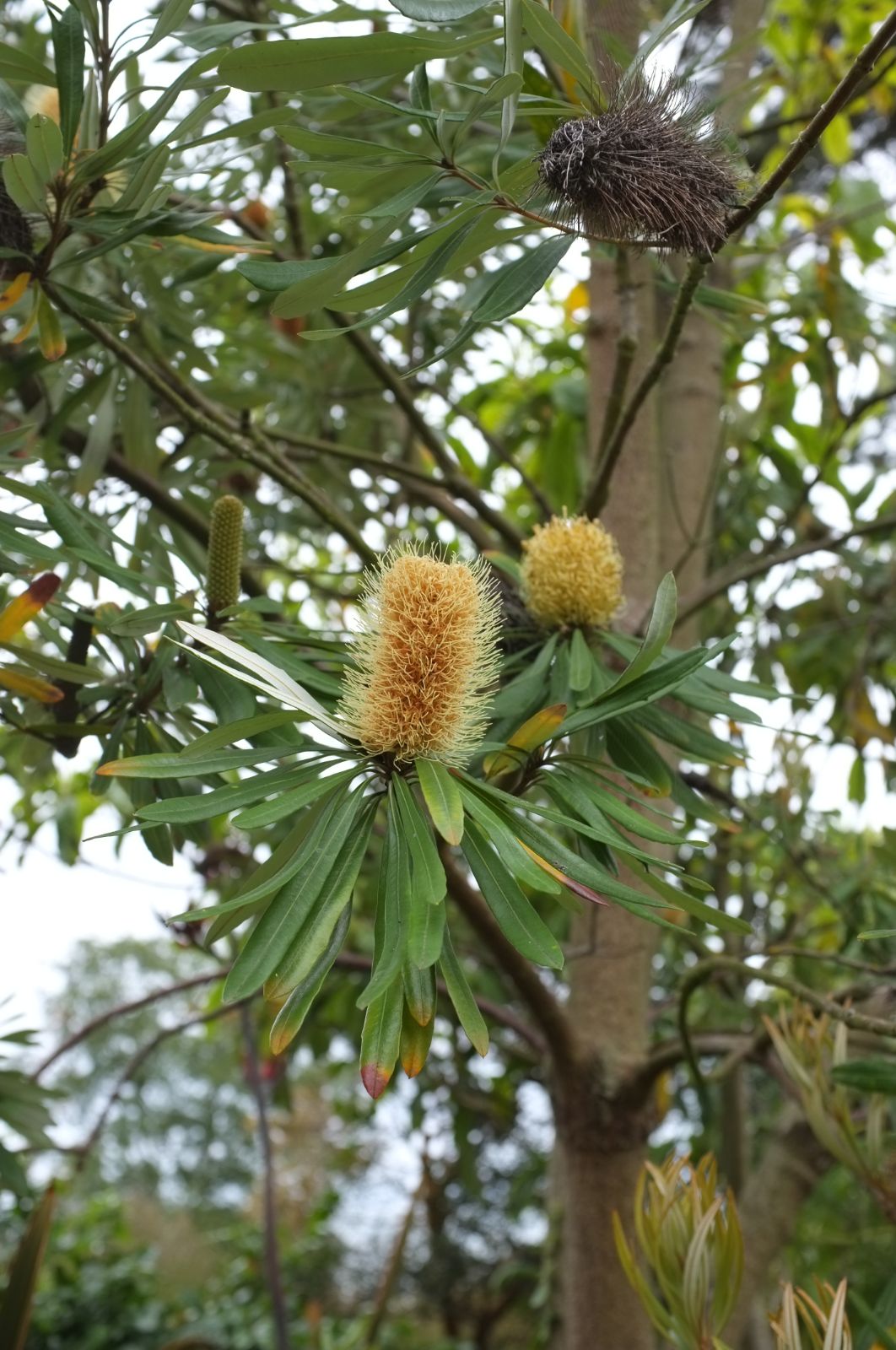Banksia
Credits
Article from New Trees by John Grimshaw & Ross Bayton
Recommended citation
'Banksia' from the website Trees and Shrubs Online (treesandshrubsonline.
Family
- Proteaceae
Common Names
- Banksias
There are 76 species of Banksia and almost all of these are endemic to Australia, with over three-quarters occurring only in the southwestern corner of Western Australia. Banksias are trees or shrubs, some with prostrate and/or underground stems. The leaves are alternate or whorled and may be entire, dentate, serrate or with deep triangular lobes. The inflorescences are erect or pendulous, cylindrical, ovoid or spherical and with a whorl of narrow, hairy, often caducous bracts around the base. The flowers are numerous and in pairs; the pairs are arranged in longitudinal rows along the length of the inflorescence. The flowers are 4-merous; the tepals are free or partially united, the stamens are adnate to the tepals and the style is wiry and elongated. Only a limited number of flowers per inflorescence will set seed. Those that do, develop into a woody follicle with one or two seeds, separated by a two-winged plate. The follicles remain attached to the tomentose inflorescence axis, and the whole structure is known as a ‘banksia cone’. In most Banksia species, fire stimulates the follicles to open, though in some the follicles open as soon as the seeds are mature. The seeds have a wedge-shaped papery wing (George 1999).
The genus Banksia, with its extraordinary ‘cone’, is one of the most typically Australian plants: one imagines a kookaburra perched atop every bush. Long cosseted as greenhouse plants in the northern hemisphere, they are now emerging to be tested in the open air. Those described below are true trees, and particularly hardy. Others in cultivation in England (which effectively means Cornwall) at the present time are: B. canei J.H. Willis, B. ericifolia, B. grandis Willd., B. menziesii R. Br., B. praemorsa Andrews, B. robur Cav., B. serrata, B. speciosa and B. spinulosa, mostly rather shrubby in nature. Comments on these and their cultivation requirements in Cornwall are given by Moore (2004). Further species will be found in cultivation in California and other places with a Mediterranean climate.
As with most members of the Proteaceae, Banksia has very specific requirements for successful cultivation. These are described in detail elsewhere (Elliot & Jones 1982, Moore 2004), but in summary, a free-draining, infertile acid soil (pH 3.5–6.5) in full sun is essential. A raised bed or the upper part of a bank from which frosty air drains off are indicated, especially where conditions are marginal. Lean soil will favour the production of hardened-off shoots that are better able to withstand winter than long growth produced by plants in richer conditions, but if protection is required then a wrapping of horticultural fleece will help, and a mulch of pine-needles or straw will insulate the surface roots. Most members of the Proteaceae have a mass of fine roots near the surface which efficiently catch any moisture and nutrients available in their generally spartan and arid natural habitats. The provision of extra nutrients should therefore be avoided, whether by the well-intended application of an organic mulch or as chemical fertiliser: high phosphate levels are particularly dangerous. Water need only be supplied if there is an extended drought period.




